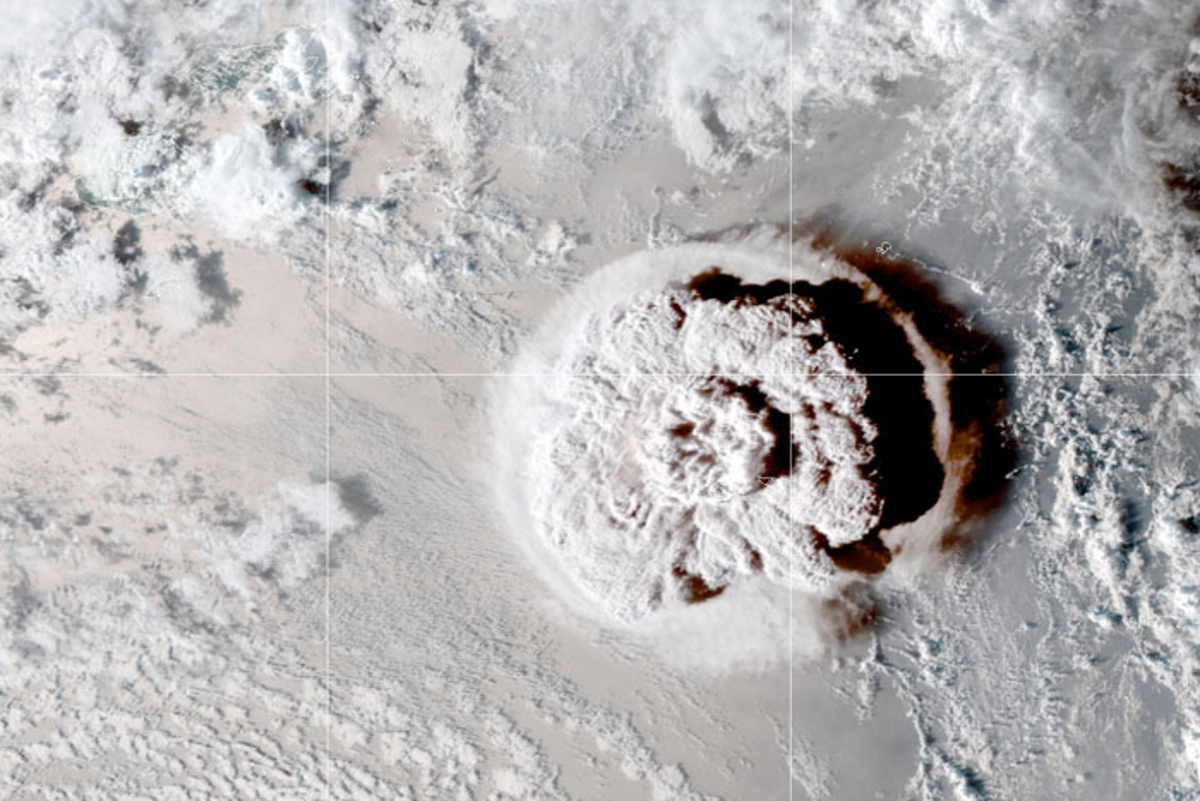Tonga volcanic eruption blew 58,000 swimming pools of water into the atmosphere

The Hunga Tonga-Hunga Ha’apai submarine volcano eruption on 15 January was one of the largest explosions recorded in the past 140 years, generating a shock wave that circled the Earth six times and sending a plume of ash and steam 30 miles high into the atmosphere.
Now scientists have calculated just how much water vapor the eruption shot into the atmosphere, an incredible 38 billion or more gallons of water, or enough to fill 58,000 Olympic swimming pools.
“We’ve never seen anything like it,” Nasa Jet Propulsion Laboratory atmospheric scientist Luis Millán said in a statement.
Dr Millán led a new study published in the journal Geophysical Research Letters that quantified the amount of water vapor the Tonga volcano injected into the layer of the atmosphere between about 8 and 33 miles high, also known as the stratosphere. The study used data from Nasa’s Aura satellite, which measures air quality, ozone and trace gasses using its microwave limb sounder (MLS) instrument.
Using microwave frequencies allows the MLS instrument to study vertical columns of the atmosphere and see through clouds, ash, or other material that would block visual observations.
MLS was the only instrument with dense enough coverage to capture the water vapor plume as it happened, and the only one that wasn’t affected by the ash that the volcano released,” Dr Millán said.
The study found the amount of water thrown into the atmosphere by the eruption as equivalent to 10% of the water vapor already present in the stratosphere. It was an amount of water vapor four times greater than the amount launched into the air by the 1991 eruption of Mount Pinatubo in the Philippines, which was the second largest volcanic eruption of the 20th century.
Unlike the Pinatubo eruption, or the Krakatoa eruption of 1883, the Tonga eruption is unlikely to cool the Earth’s climate, according to a Nasa blog. The Tonga eruption did not inject as many sunlight blocking aerosols and ash into the atmosphere as those earlier eruptions, while the massive amount of water vapor may well trap more heat in the atmosphere and cause temporary warming.
The massive amount of water vapor could remain aloft for several years, and could alter the chemistry of the upper atmosphere, including temporarily depleting the ozone layer.
The reason the Tonga eruption produced so much water vapor relative to other large volcanic eruptions is because of the volcano’s location: The Hunga Tonga-Hunga Ha’apai caldera lay 490 feet below the ocean’s surface, the perfect depth for generating a massive plume of steam, according to Nasa.
“Any shallower, and there wouldn’t have been enough seawater superheated by the erupting magma,” the blog noted.” Any deeper, and the immense pressures in the ocean’s depths could have muted the eruption.”
